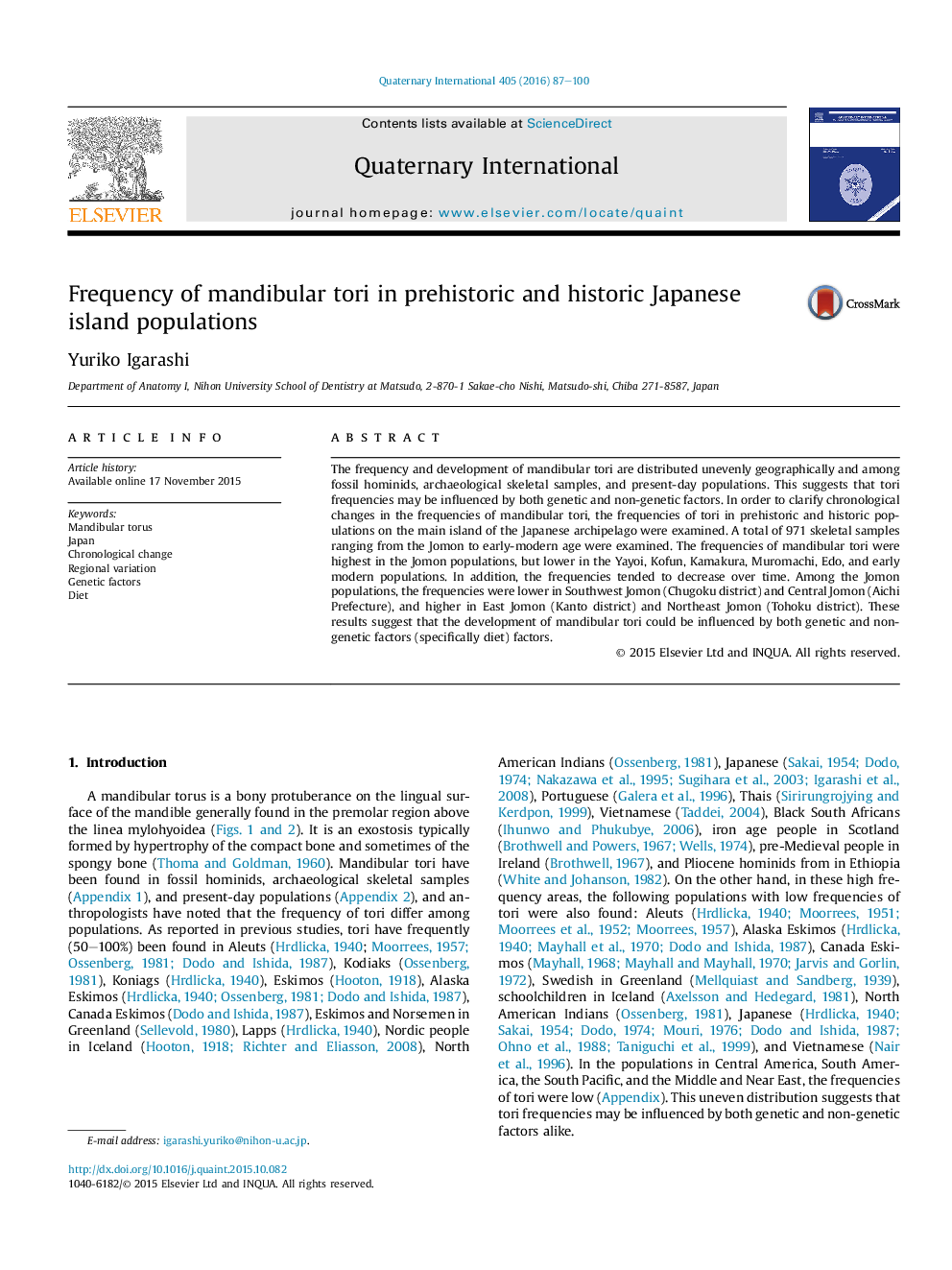| کد مقاله | کد نشریه | سال انتشار | مقاله انگلیسی | نسخه تمام متن |
|---|---|---|---|---|
| 10500885 | 944454 | 2016 | 14 صفحه PDF | دانلود رایگان |
عنوان انگلیسی مقاله ISI
Frequency of mandibular tori in prehistoric and historic Japanese island populations
ترجمه فارسی عنوان
فراوانی توری فک پایین در جمعیت های تاریخی و تاریخی ژاپن
دانلود مقاله + سفارش ترجمه
دانلود مقاله ISI انگلیسی
رایگان برای ایرانیان
کلمات کلیدی
تومور مندبولار، ژاپن، تغییر تاریخی، تنوع منطقه ای، عوامل ژنتیکی، رژیم غذایی،
موضوعات مرتبط
مهندسی و علوم پایه
علوم زمین و سیارات
زمین شناسی
چکیده انگلیسی
The frequency and development of mandibular tori are distributed unevenly geographically and among fossil hominids, archaeological skeletal samples, and present-day populations. This suggests that tori frequencies may be influenced by both genetic and non-genetic factors. In order to clarify chronological changes in the frequencies of mandibular tori, the frequencies of tori in prehistoric and historic populations on the main island of the Japanese archipelago were examined. A total of 971 skeletal samples ranging from the Jomon to early-modern age were examined. The frequencies of mandibular tori were highest in the Jomon populations, but lower in the Yayoi, Kofun, Kamakura, Muromachi, Edo, and early modern populations. In addition, the frequencies tended to decrease over time. Among the Jomon populations, the frequencies were lower in Southwest Jomon (Chugoku district) and Central Jomon (Aichi Prefecture), and higher in East Jomon (Kanto district) and Northeast Jomon (Tohoku district). These results suggest that the development of mandibular tori could be influenced by both genetic and non-genetic factors (specifically diet) factors.
ناشر
Database: Elsevier - ScienceDirect (ساینس دایرکت)
Journal: Quaternary International - Volume 405, Part B, 16 June 2016, Pages 87-100
Journal: Quaternary International - Volume 405, Part B, 16 June 2016, Pages 87-100
نویسندگان
Yuriko Igarashi,
